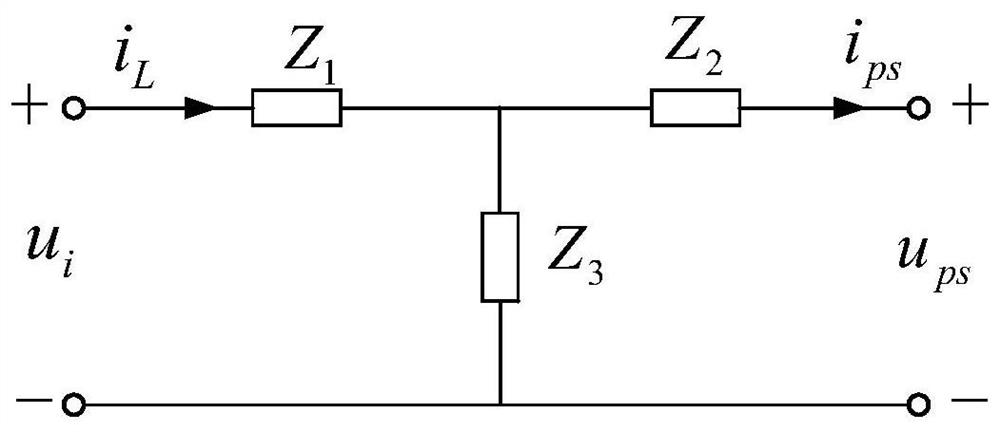Reduction method of lcl-t module of photovoltaic power generation system
A photovoltaic power generation system and reduced-order technology, applied in photovoltaic power generation, electrical components, circuit devices, etc., can solve the problems of large memory occupation, large amount of calculation, complex network system structure, etc.
- Summary
- Abstract
- Description
- Claims
- Application Information
AI Technical Summary
Problems solved by technology
Method used
Image
Examples
Embodiment Construction
[0068] A method for reducing the order of a photovoltaic power generation system LCL-T module of the present invention will be clearly and completely described below with reference to the accompanying drawings and embodiments.
[0069] Step S1: consider the non-saturation situation of the isolation transformer;
[0070] Step S1 is based on the T-type equivalent schematic diagram in the case of non-saturation of the isolation transformer, as shown in the attached figure 1 shown, including:
[0071] S11: Establish a mathematical model based on the LCL-T module of the photovoltaic power generation system, and obtain the filter input voltage u i respectively with the filter L 1 output current i L and the primary side current i of the transformer ps The transfer function between;
[0072] Taking the single-phase structure of the LCL-T module as an example, the transformer adopts the T-type equivalent circuit model. The equivalent circuit diagram of the LCL-T module of the phot...
PUM
 Login to View More
Login to View More Abstract
Description
Claims
Application Information
 Login to View More
Login to View More - R&D
- Intellectual Property
- Life Sciences
- Materials
- Tech Scout
- Unparalleled Data Quality
- Higher Quality Content
- 60% Fewer Hallucinations
Browse by: Latest US Patents, China's latest patents, Technical Efficacy Thesaurus, Application Domain, Technology Topic, Popular Technical Reports.
© 2025 PatSnap. All rights reserved.Legal|Privacy policy|Modern Slavery Act Transparency Statement|Sitemap|About US| Contact US: help@patsnap.com



